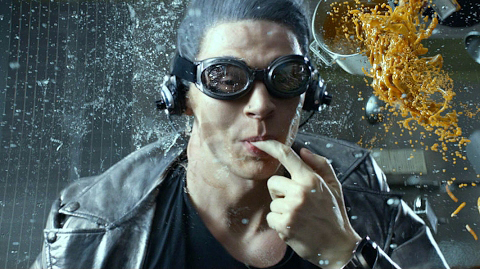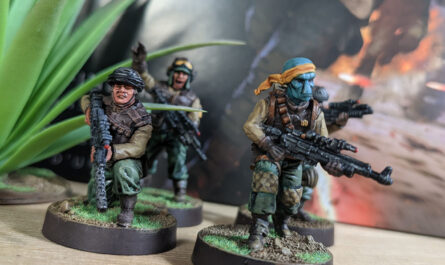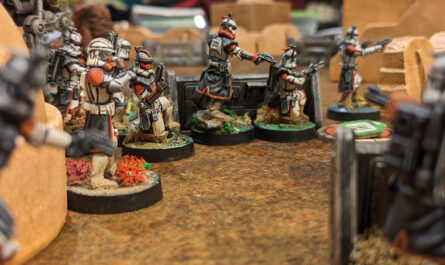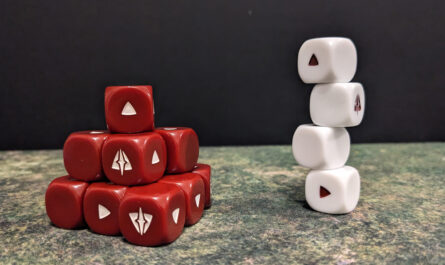Although Star Wars Legion offers an alternating activation system, it is possible for a player to string together several consecutive activations, leaving the opponent with no chance to react to their actions. To achieve this, you need to apply the LIFO method to your activation stack. In this article, I review this method, which will allow you to disrupt the game’s rhythm and surprise your opponent.
What is the LIFO method?
The LIFO method is a term used in logistics to describe the management of a goods inventory. LIFO is an acronym for Last In, First Out. It contrasts with the FIFO method (First In, First Out), which is commonly used for managing perishable goods: the first yogurt added to the stock must be the first one to leave.
“But what does this have to do with Star Wars Legion?” you might ask.
Since the LIFO method describes a flow, it can be applied in other areas, including Star Wars: Legion. The order token stack can be seen as a resource pool, and game rounds act as stock replenishment periods. Applying the LIFO method in Legion essentially means this: the last unit activated in one round will be the first to activate in the next round.
What’s the point?
This strategy allows players to chain two consecutive activations across two rounds. Activating last in one round and first in the next enables riskier maneuvers (such as moving into the open). It can be used to attack an opposing unit twice in a row without giving them a chance to react.
For regular readers, you may recognize in the LIFO method a form of virtual action advantage. That’s right! A unit that activates twice in a row gets four consecutive actions. This is much more powerful than spacing out those actions over time. It’s as if your unit can act faster than its opponents within the same time frame.

The cuckoo technique
The LIFO method truly shines when these four actions are used to move out of cover, fire twice, and then retreat back into cover. This sequence resembles the movement of the cuckoo in those iconic cuckoo clocks. Remember it? The little bird that pops out briefly to announce the hour. Except in Legion, it’s more like announcing to the enemy unit that death awaits them!
Example
Imagine the following scenario: In turn T, your heavily armed Shoretroopers unit is hidden behind a building. No line of sight can be drawn to these soldiers of the Empire… As the last unit to activate, they move out of hiding. They position themselves in the open, but it doesn’t matter: they now have a clear line of sight on an enemy unit. A volley of blaster fire streaks through the air, blazing with intense light. Dodge tokens are spent, while wound tokens pile up.
At the start of the next turn, the same Shoretroopers are the first to activate: the blasters roar once again. The unit moves back and retreats into cover.
The result is ideal: two back-to-back volleys, following the cuckoo’s back-and-forth motion.
How to Implement the LIFO Method?
The LIFO method requires planning across two rounds. It involves being the last player to activate a unit in the first round of the strategy and taking the initiative in the second round. You also need to ensure that the unit executing the method is activated both last and first in these two rounds. Each of these requirements warrants further explanation:
Activating the Target Unit on Command
This is usually achieved with a face-up order token (by targeting the unit with command cards). If your faction or list allows it, an alternative is to control the contents of your order pool and draw the appropriate token at the right moment. The Separatist Alliance is particularly skilled at implementing this tactic.
Securing the Last Activation
This requirement is less straightforward than it may seem. It depends on the difference between your pass pool and the one of your opponent.
Reminder: How to create the Pass Pool ?
After creating the order pool, each player counts the number of undefeated units they control. The player with fewer undefeated units adds a number of advantage tokens to their pass pool equal to one less than the difference between these counts.
You’ll need to perform a quick calculation before the command phase to assess your chances of securing the last activation. In order to simplify the next explanations, I’m going to define the reaction pool as the sum of your order pool and your pass pool. Three scenarios are possible:
- Your reaction pool is identical as the one of your opponent (delta = 0):
In this case, you must lose initiative during the round by playing a high-pip command card. - Your reaction pool is greater than the one of your opponent (delta = +1):
It makes no difference whether you take or give the initiative, you will be able to secure the last activation. - Your reaction pool is smaller than the one of your opponent (delta = -1):
In this case, you cannot secure the last activation and therefore won’t be able to setup the LIFO method.
Securing initiative
To gain initiative, you need to play a command card with fewer pips than your opponent’s. You don’t necessarily need to play a 1-pip card. Simply review the pips they’ve already used to determine the pip value that guarantees you initiative. If there’s a tie when revealing cards, you’ll have to rely on luck to determine the winner. Fortunately, some characters are better at securing initiative, such as Han Solo with his 0-pip Sorry About the Mess or Orson Krennic with his Cunning keyword.
Which units to target with the LIFO Method?
You can apply the LIFO method to any unit. If you like the “Cuckoo Technique,” it’s best used with units capable of dealing significant damage. Force users or bounty hunters are excellent choices.
Are all characters ideal for the LIFO method ?
Not necessarily. Some excel more than others. To identify the best-suited units, take a closer look at their command cards.
Example with Bossk, LIFO master
The bounty hunter Bossk is an ideal candidate for the LIFO method, as demonstrated by his command cards:

3-Pip Lying in Wait:
This card builds up Aim tokens as opposing units activate, implying that Bossk should activate as late as possible to maximize this bonus. The high pip count reduces the likelihood of gaining initiative when played.

1-Pip Merciless Munitions:
In the second round of the LIFO strategy, you need to take initiative. What better option than a 1-pip card? This card allows Bossk to perform an offensive action (arming a bomb) while benefiting from a free move. If you’re using the Cuckoo Technique, this “attack and retreat” tactic is ideal. At worst, you arm the charge (+free move) and use your second action to retreat. At best, you attack, arm the bomb, and use the free move to return to cover.

2-Pip Reptilian Rampage:
This offers an alternative offensive-retreat strategy: “During his activation, Bossk can perform up to two Attack actions and may suffer 1 wound to perform a free Move action.” Be careful: the card doesn’t grant a free attack, just the ability to bypass the one-attack-per-turn limit. With the LIFO method, Bossk could potentially shoot three times consecutively:
Cuckoo Example:
Turn t: Move from cover + Attack
Turn t+1: Attack + Attack + Move (via wound) back to cover
Final thoughts
There you have it! The Last In, First Out method, well-known among experienced players. I hope you’ll try it out in your next games and use it to gain the upper hand over your opponent!

Find Star Wars: Legion players
Join your country’s SWL Discord community and connect with players nearby.



